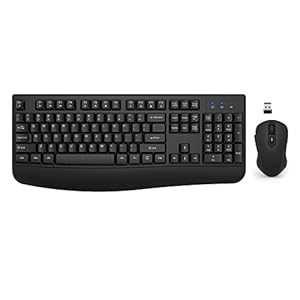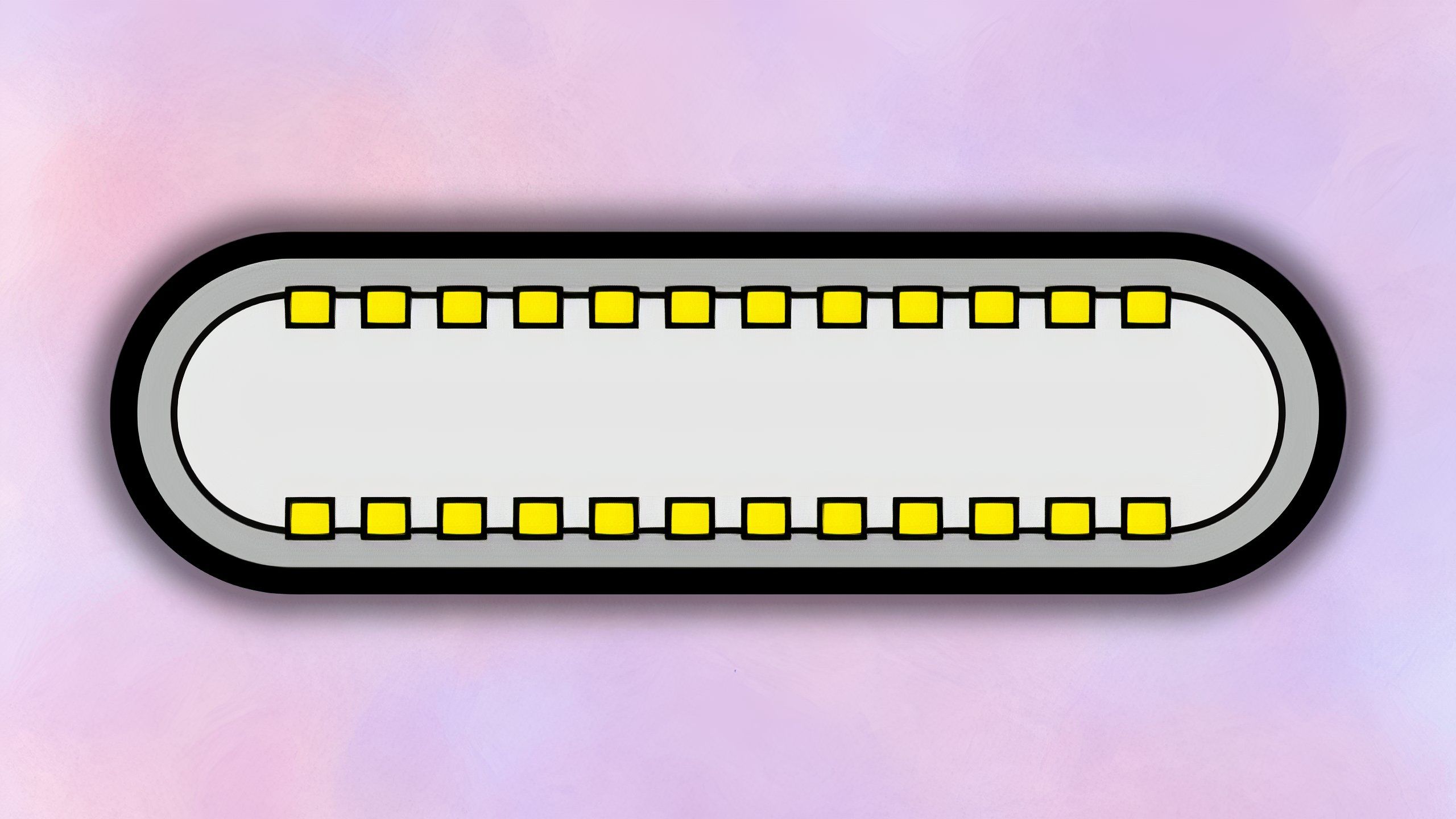Abstract
- USB-C is a common connector that helps quite a lot of totally different and complicated requirements.
- There are numerous quick charging and information switch choices on USB-C, however compatibility varies between manufacturers.
- USB-C affords adaptability, but it surely comes at a severe value for anybody on the lookout for the most effective expertise.
Apple needed to be dragged kicking and screaming to help USB-C on the iPhone, however now that it does, you solely want one cable to cost your entire units. The method began on the iPad Pro in 2018, and the corporate’s MacBooks in 2015, however did not come to the iPhone till the discharge of the iPhone 15 in 2023. The irony is that Apple was an early adopter of Kind-C connectors due to the pliability it offers it to create sleeker units with fewer ports. The corporate primarily did not like giving up its ecosystem of Lightning adapters and equipment.
It was the European Fee that in the end pressured the corporate to play ball when it passed a law in 2020 that may require all smartphones to characteristic a USB-C port by the tip of 2024. The governing physique wished to scale back e-waste, however USB-C had apparent benefits, too. Not solely can USB-C help charging and information switch on the similar time, it additionally permits ports to imagine the function of devoted DisplayPort and HDMI ports.
Much more importantly, Kind-C connectors are reversible. Whereas utilizing one cable for all the things is handy, the flexibility of USB-C and the assorted charging and information switch requirements is not. And within the decade since USB-C was first launched, issues have not gotten a lot better. Everybody signed on for a less complicated connector, however in the end, they have not gotten a less complicated expertise.
USB-C achieves the dream of a common connector (on paper)
Charging and information switch in a single adaptable little plug
USB-C was launched in 2014 by the USB Implementers Forum, a requirements physique composed of main tech corporations like Apple, HP, and Intel. The express aim of USB Kind-C (usually shortened to USB-C) was to create a compact and reversible substitute for the USB-A and MicroUSB connectors discovered on the vast majority of electronics on the time. USB-C would not unify all of them below one adaptable connector, making it potential — with the Kind-C’s 24 totally different metallic pins — to make use of the identical cables and ports throughout desktop computer systems, laptops, and the rising panorama of cellular units.
The issue with the Kind-C connector being so versatile, is that as new revisions and enhancements have been launched to USB, it acquired tougher and tougher to inform which cable or port supported what.
Save for a couple of more moderen Kind-C unique requirements, USB-C is suitable with the majority of USB generations that have been launched earlier than it, from USB 2.0 during USB 4 (the naming conventions aren’t imagined to be deliberately complicated, but it surely definitely looks like they’re). When USB-C first turned accessible, it noticed early adoption from corporations seeking to supply streamlined units with fewer ports. You would theoretically dispose of having separate USB and energy connectors and bundle all of them collectively below one USB-C port, for instance. Apple particularly used the brand new connector to create the 12-inch MacBook, which featured a single USB-C port for energy and information switch and required dongles and adapters to attach a number of equipment without delay.
The issue with the Kind-C connector being so versatile, is that as new revisions and enhancements have been launched to USB, it acquired tougher and tougher to inform which cable or port supported what. All of them appeared the identical, however they would not essentially all help the identical options. That is what’s produced the confounding panorama of various USB-C options we now have at present.
Transferring energy or information is the place USB-C will get sophisticated
A number of generations of requirements are supported, on prime of alternate makes use of
Many of the USB-C cables that come packed in with a brand new smartphone, pill, or laptop computer help each charging and information switch. With that in thoughts, when you stick with the choices supplied by the producer of your chosen electronics, you ought to be effective. Staying in-ecosystem ensures USB options will probably be communicated in the identical means, and in case your cellphone, pill, or laptop computer helps some sort of additional ability like quick charging, you are certain to have the ability to benefit from it.
Issues actually get wild if you step exterior of that or take into accounts the huge variety of proprietary choices constructed on prime of present requirements. For instance, some telephones supply quicker charging than the norm via a mixture of customized chargers, cables, and cellphone designs. When you’ve got a OnePlus cellphone, you is perhaps conversant in the corporate’s SuperVOOC charging, which might energy up its telephones at 100W speeds. That may translate to going from an empty battery to 100-percent charged in 30 to 40 minutes.
Requirements our bodies don’t have any authorized energy to implement help for the standard, however they’ll make requirements internally constant and straightforward to undertake.
USB itself has what’s known as the USB Energy Supply customary, which permits sure USB-C cables to ship extra energy if a tool wants it. This permits quicker charging on units from Apple, Google, and Samsung, although it is dependent upon what revision of USB PD every system and charger helps. Issues can get much more granular than that with USB Energy Supply Programmable Energy Provide. That customary lets a tool request a selected voltage and regulate its energy draw because the system’s battery wants change. What makes charging notably tough is that not each firm helps the identical requirements, and even when they do, they may not help it constantly throughout units.
The identical goes for USB-C’s numerous Alternate Modes, which let the connector double as a completely totally different sort of port. USB-C may tackle the performance of HDMI, Ethernet, and even DisplayPort, relying on the wants of your system. Meaning you would use a USB-C to attach your laptop computer to a monitor or an exterior GPU, theoretically via the identical port. Once more, issues get extra sophisticated, this time as a result of not each USB-C port on each system helps the identical factor. All of the USB-C ports on Apple’s most recent MacBook Pro help Thunderbolt 4 or higher (Thunderbolt permits you to switch a video sign, energy supply, and information on the similar time). On the MacBook Air, although, solely two supply Thunderbolt. You would not know except you checked out a diagram on Apple’s web site or tried every port.
Information switch is its personal beast, to the purpose you would write an entire separate article on the nuances of switch speeds and naming conventions. Normally, although, switch speeds have elevated with every consecutive technology. Beneath is a basic breakdown:
- USB 1 / USB 1.1: 12 Mbps
- USB 2.0: 480 Mbps
- USB 3.0: 5 Gbps
- USB 3.1: 10 Gbps
- USB 3.2: 20 Gbps
- USB4: 40 Gbps
- USB4 2.0: 80 Gbps
As of proper now, USB 2.0 and up are supported on USB-C connectors, however the names of a few of these requirements have additionally modified, for no matter purpose. USB 3.0 is now known as USB 3.2 Gen 1×1, USB 3.1 is USB 3.2 Gen 2×1, and USB 3.2 is USB 3.2 Gen 2×2. There are official causes as to why these names have modified, however at a sure level you simply have to simply accept that these items are going to be sophisticated eternally.
USB-C is handy, but it surely might be a lot better
So long as incremental upgrades exist, confusion persists
The widespread adoption of USB-C is indubitably a great factor, however as this text hopefully illustrates, it hasn’t fastened all the things. It is good that one cable can switch photographs from my digicam and cost my cellphone, but it surely’s exhausting to say whether or not I am getting the optimum expertise. The only path is to stay with one firm on your charger and cables, whether or not it is the corporate that made your system or a trusted third-party.
One other sweeping legislation may simplify issues sooner, however for now, be blissful that you do not have to suppose too exhausting about what route you are plugging your USB cable in. For extra data on charging, take a look at Pocket-lint’s list of common charging myths. If you would like one other potential answer to the USB-C, you may examine Microsoft’s attempts to implement USB-C requirements.
Trending Merchandise

Acer Aspire 3 A315-24P-R7VH Slim Laptop computer | 15.6″ Full HD IPS Show | AMD Ryzen 3 7320U Quad-Core Processor | AMD Radeon Graphics | 8GB LPDDR5 | 128GB NVMe SSD | Wi-Fi 6 | Home windows 11 Residence in S Mode

LG 27MP400-B 27 Inch Monitor Full HD (1920 x 1080) IPS Display with 3-Side Virtually Borderless Design, AMD FreeSync and OnScreen Control – Black

Thermaltake V250 Motherboard Sync ARGB ATX Mid-Tower Chassis with 3 120mm 5V Addressable RGB Fan + 1 Black 120mm Rear Fan Pre-Installed CA-1Q5-00M1WN-00

TP-Hyperlink AXE5400 Tri-Band WiFi 6E Router (Archer AXE75)- Gigabit Wi-fi Web Router, ax Router for Gaming, VPN Router, OneMesh, WPA3

CORSAIR iCUE 4000X RGB Tempered Glass Mid-Tower ATX PC Case – 3X SP120 RGB Elite Followers – iCUE Lighting Node CORE Controller – Excessive Airflow – Black

Wireless Keyboard and Mouse Combo, EDJO 2.4G Full-Sized Ergonomic Computer Keyboard with Wrist Rest and 3 Level DPI Adjustable Wireless Mouse for Windows, Mac OS Desktop/Laptop/PC









